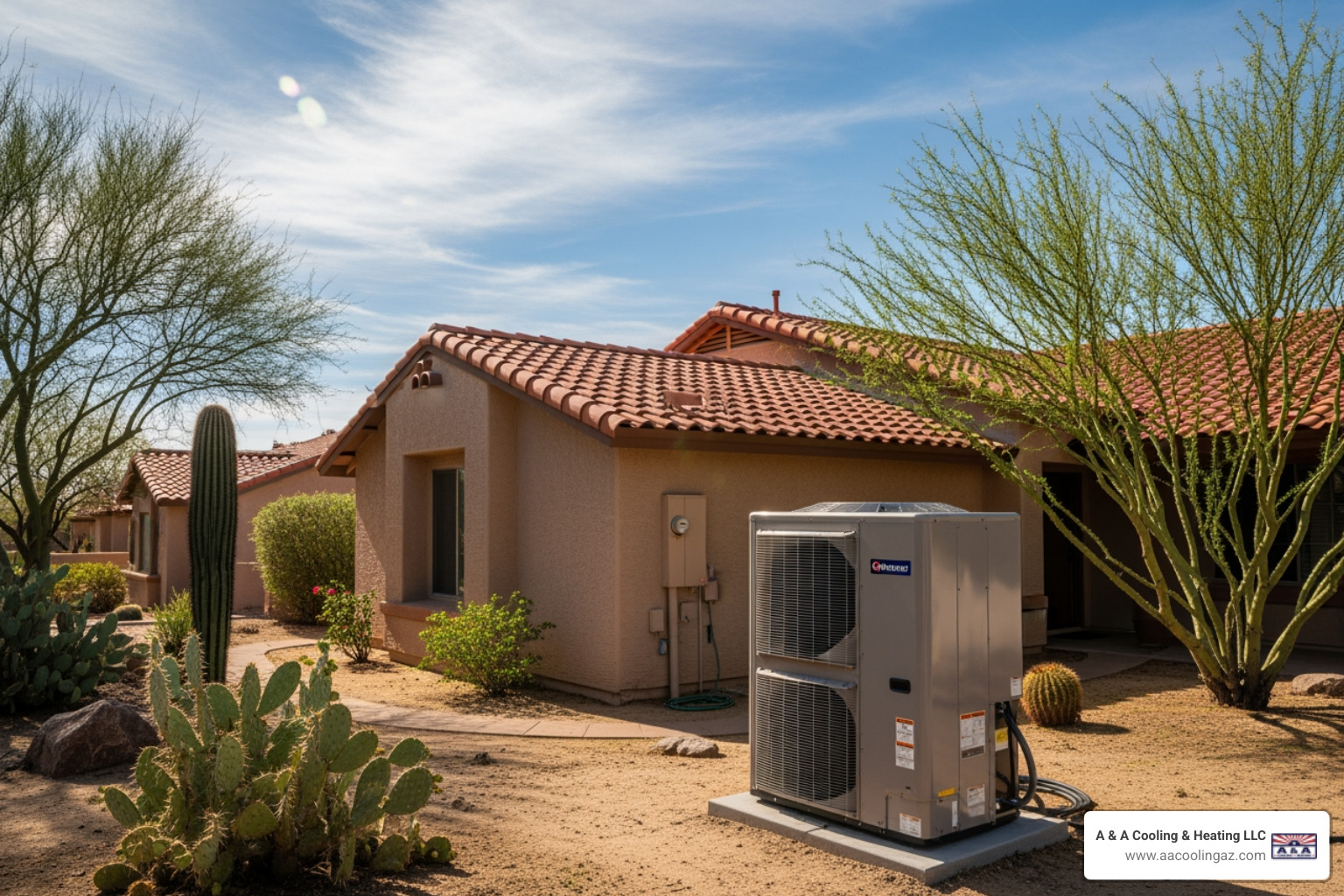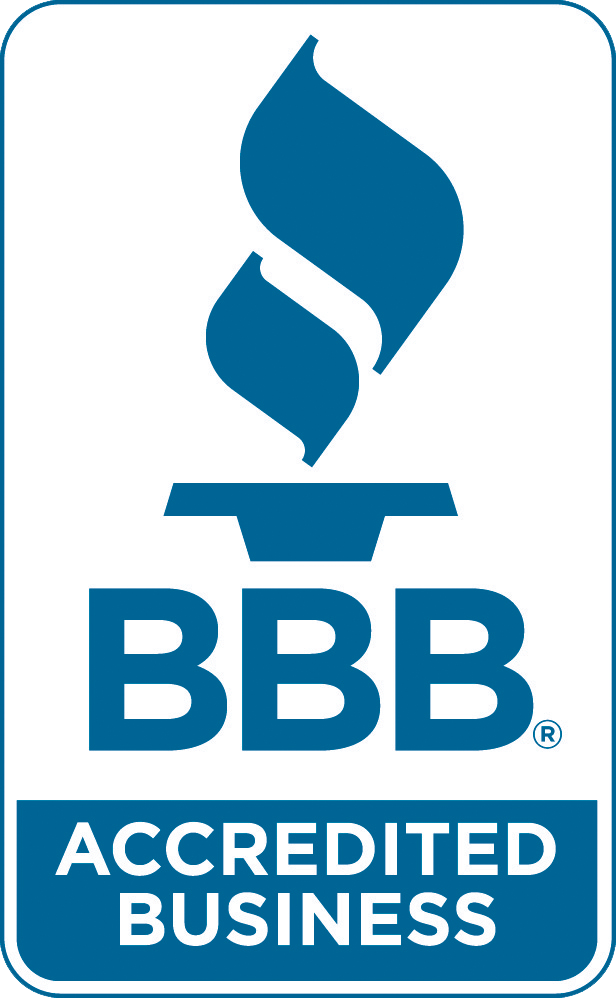What Are Air Quality Solutions? A Comprehensive Guide to Breathing Better
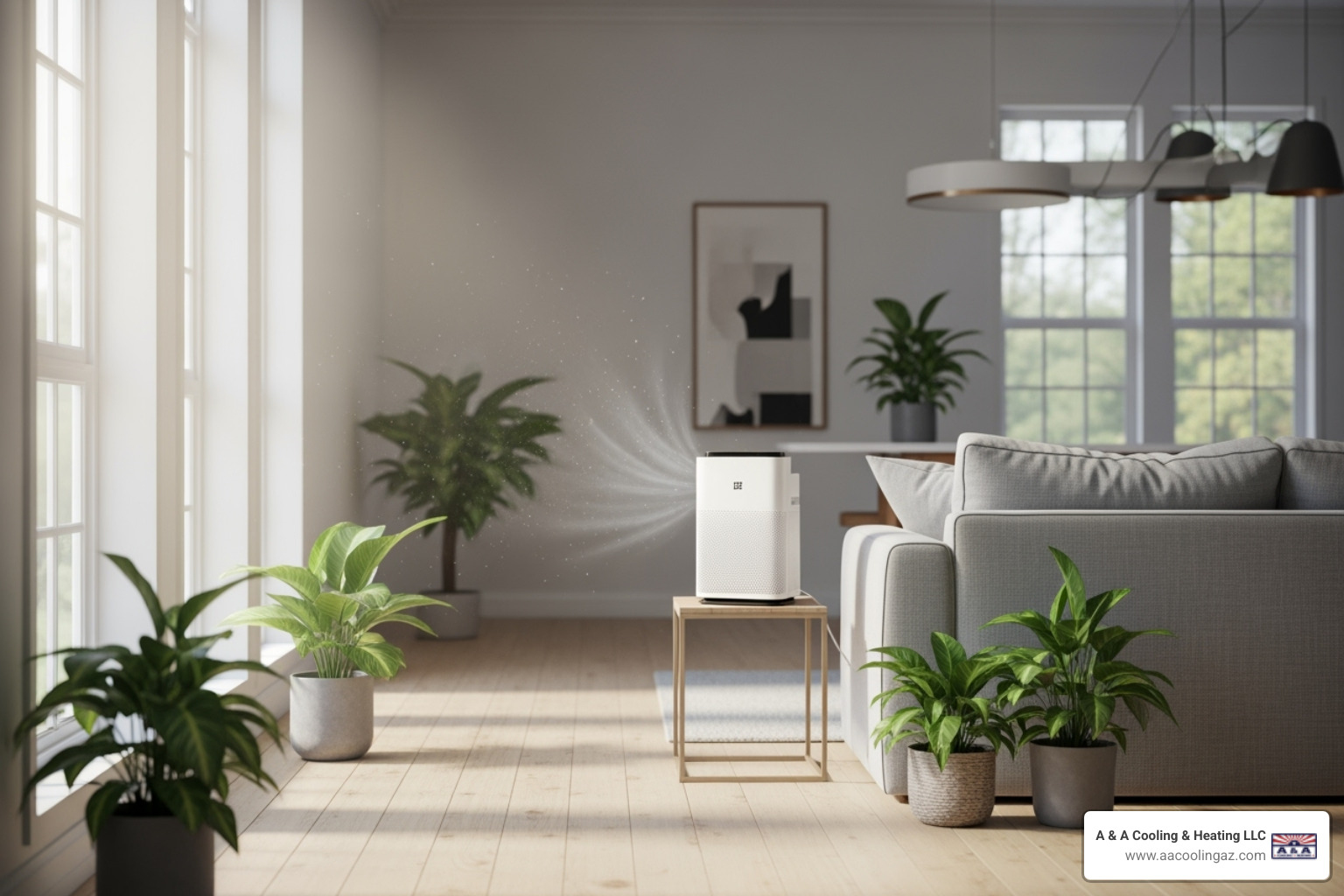
Why Clean Indoor Air Matters More Than You Think
Air quality solutions are systems and strategies designed to remove pollutants, control humidity, and improve ventilation. They work together to create healthier indoor environments by addressing the root causes of poor air quality.
The most effective air quality solutions include:
- Source Control: Eliminating or reducing pollution sources.
- Ventilation: Bringing in fresh outdoor air and exhausting stale indoor air.
- Air Cleaning: Using filters and purifiers to remove airborne contaminants.
- Humidity Control: Managing moisture with humidifiers and dehumidifiers.
- Air Sanitization: Using UV lights to neutralize bacteria, viruses, and mold.
Most people spend 90% of their time indoors, where air can be 2-5 times more polluted than outside. In Arizona's climate, sealed homes designed to keep out heat can trap pollutants like dust mites, pet dander, cooking fumes, and chemicals from furniture and cleaning products. These invisible culprits can cause headaches, fatigue, and long-term respiratory problems.
The Environmental Protection Agency recommends a three-pronged approach to tackle these issues. By combining source control, improved ventilation, and air cleaning technologies, you can create an indoor environment that supports your family's health and comfort.

Understanding Indoor Air Quality: The Invisible Problem
Indoor air quality (IAQ) refers to the tiny particles, gases, and microorganisms floating around inside your home. While you can't see them, these substances can significantly impact how you feel every day.
The main troublemakers include pollutants of all kinds. Particulate Matter (PM2.5) are tiny particles from sources like candles, cooking, or dust that can get deep into your lungs. Volatile Organic Compounds (VOCs) are gases released from paints, cleaning supplies, and furniture. Your home might also host allergens like pollen and pet dander, mold spores from damp spots, and airborne bacteria and viruses.
The American Lung Association offers excellent guidance on tackling these issues – you can learn more from The American Lung Association on improving IAQ.
Common Sources of Indoor Air Pollution
Your home is a surprisingly busy factory of air contaminants. Once you know where they come from, you can take action with the right air quality solutions.
- Cooking fumes: Sautéing, toasting, and especially burning food releases particles and gases. Gas stoves also produce nitrogen oxides.
- Cleaning products: Many contain harsh chemicals that release VOCs, meaning that "fresh and clean" scent might be a cocktail of irritants.
- Building materials and furniture: New flooring, pressed wood products, and even a new couch can slowly release chemicals (off-gassing) for months or years.
- Pet dander: Tiny flakes of skin shed by pets become a constant presence in your air, carried by hair that also collects other allergens.
- Pollen and outdoor pollution: Pollen hitches rides indoors on clothes and pets, while smog and smoke can seep into your home through cracks and vents.
For more detailed strategies on addressing these sources, check out our comprehensive Guide to Improving Indoor Air Quality.
The Health and Economic Effects of Poor Air Quality
Poor indoor air quality can seriously impact your health, energy, and wallet. The effects range from daily annoyances to long-term health concerns.
On the health front, you might notice more frequent allergies and asthma attacks. Chronic exposure can lead to respiratory issues like bronchitis, while VOCs can cause persistent headaches and fatigue. Long-term risks are more serious, with links to heart disease, cognitive decline, and cancer. This phenomenon is sometimes called "sick building syndrome," where people feel unwell only when inside a specific building.
The economic impact is also significant. Research shows that improving indoor air quality can boost cognitive performance and productivity while reducing sick days. Factoring in healthcare expenses for treating air quality-related illnesses, investing in effective air quality solutions is a smart decision for your family's health and budget.
The Three Pillars of Effective Air Quality Solutions
Improving your home's air is like building a sturdy three-legged stool; each leg is essential. The EPA identified these three pillars, and our experience in Arizona confirms this holistic approach transforms homes into healthy havens.
The strategy works because the pillars support each other: Source control stops problems before they start, ventilation dilutes what's there, and air cleaning captures what remains. It's a complete system for round-the-clock air quality management.
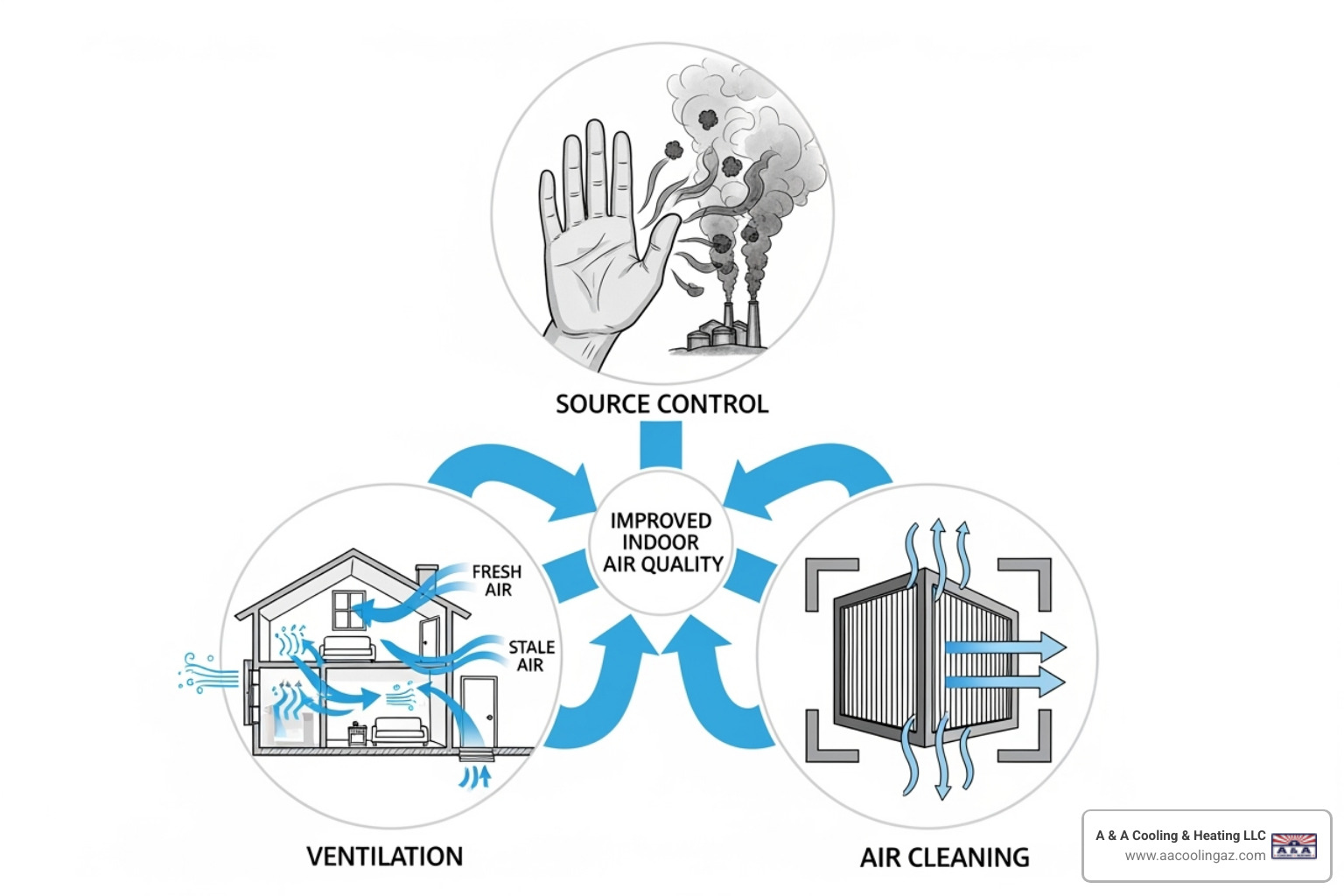
Pillar 1: Source Control
The best pollutant is one that never enters your home. Source control means identifying and stopping pollution at its origin. This can be as simple as switching to fragrance-free cleaners or storing paint cans in the garage. When shopping, look for low-VOC or no-VOC labels on paint, furniture, and cleaning supplies. Properly storing chemicals in a well-ventilated area is also key. Source control is the most cost-effective strategy because prevention always beats treatment.
Pillar 2: Ventilation
Fresh air is a reset button for your home. Ventilation works by diluting pollutants when you bring fresh outdoor air inside and push stale air out. Natural ventilation through windows is great when Arizona's weather cooperates. However, our hot summers require sealed homes, making mechanical ventilation essential. Your kitchen and bathroom exhaust fans remove moisture and fumes at the source. For a complete solution, whole-house ventilation systems continuously introduce fresh air while managing energy efficiency, which is vital when homes are sealed tight.
We've helped countless families improve their home's indoor air quality with proper ventilation services. For more information, the Department of Energy provides excellent resources: More on whole-house ventilation from the Dept. of Energy.
Pillar 3: Air Cleaning and Filtration
Even with great source control and ventilation, some particles will remain. Air cleaning and filtration act as a safety net. Your HVAC system is the perfect place to integrate these technologies, as all your home's air passes through it. Air purifiers and filtration technologies actively capture pollutants like particles, allergens, and microorganisms. However, they aren't designed for gaseous pollutants like VOCs, which is why all three pillars must work together. The effectiveness depends on how well the system captures pollutants and how much air it processes.
If you're curious about the different filtration options available, we've put together a helpful guide: Understanding Air Filtration Systems.
Exploring Air Purification and Sanitization Technologies
Beyond the three pillars, advanced technologies can take your indoor air quality to the next level. These systems often work with your existing HVAC setup to purify and sanitize your air.
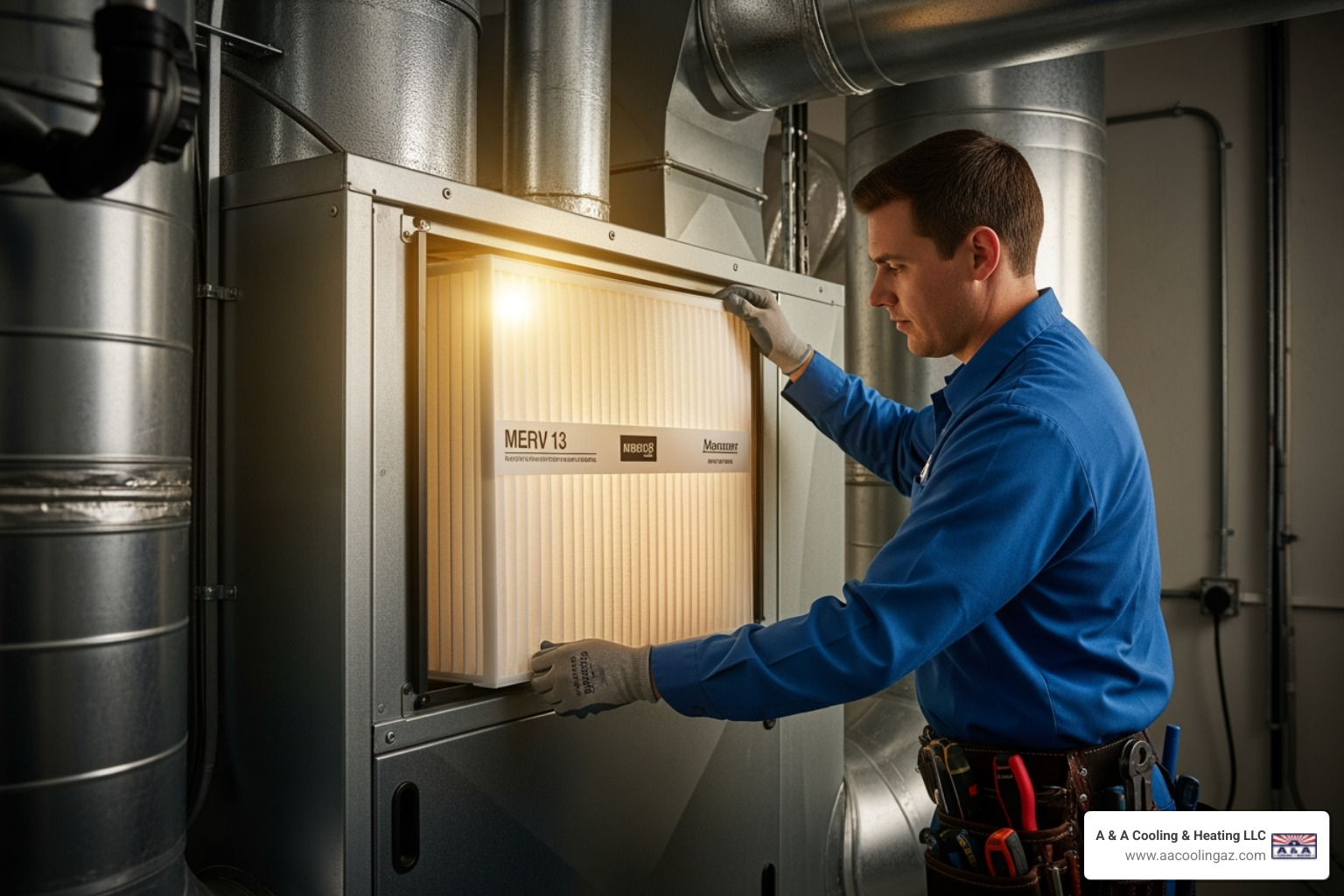
Air purification focuses on removing airborne particles and odors, while air sanitization targets and neutralizes harmful microorganisms like bacteria, viruses, and mold. Together, they form the advanced tier of comprehensive air quality solutions.
Choosing the Right Air Purification and Filtration Solutions
Picking the right system means matching the technology to your specific pollutants.
- MERV ratings (Minimum Efficiency Reporting Value) grade a filter's performance. A higher number, like MERV 15, means better capture of fine particles like dust, dander, and some viruses.
- HEPA filters are the gold standard for particle removal, capturing 99.97% of particles as small as 0.3 microns, including pollen, dust mites, and smoke.
- Activated carbon filters tackle gaseous pollutants and odors. They use adsorption to trap molecules from cooking smells, pets, and VOCs.
- Electrostatic filters use an electrical charge to attract and trap particles, making them effective for homes with high dust or pet dander.
- Photocatalytic Oxidation (PCO) is an advanced technology that uses UV light and a catalyst to break down VOCs and other gaseous pollutants into harmless substances.
For more information on these systems, check out our guide: High Efficiency Air Filtration Systems.
Comparing Whole-Home vs. Room Air Purifiers
You can choose between a whole-home system integrated with your HVAC or portable room units. Both are effective air quality solutions.
FeatureWhole-Home Air PurifiersRoom Air PurifiersCoverage AreaPurifies air throughout the entire home, integrated with the HVAC system.Purifies air in a single room or localized area.InstallationProfessional installation required, integrated into existing HVAC ductwork.Plug-and-play, portable, can be moved between rooms.EffectivenessConsistent air purification across all connected spaces. Can handle larger volumes of air.Highly effective for the specific room they are in, but limited to that area.MaintenanceTypically involves periodic filter replacement (e.g., every 6-12 months for high-efficiency filters) or UV bulb replacement.Frequent filter replacement (e.g., every 3-6 months) depending on usage and air quality.Centralized vs. PortableCentralized solution, purifies air as it circulates through your home's ventilation system.Portable solution, ideal for targeted purification in bedrooms, offices, or living areas.
Whole-home systems provide consistent, behind-the-scenes purification for your entire living space. Room air purifiers offer focused protection where you need it most, like bedrooms or home offices. Many families use a combination of both. Learn more about the advantages these systems offer: Benefits of Air Purifiers.
The Role of Humidity Control in Comprehensive Air Quality Solutions
In Arizona, humidity control is crucial for health and comfort. The amount of moisture in your air affects everything from your sinuses to your furniture.
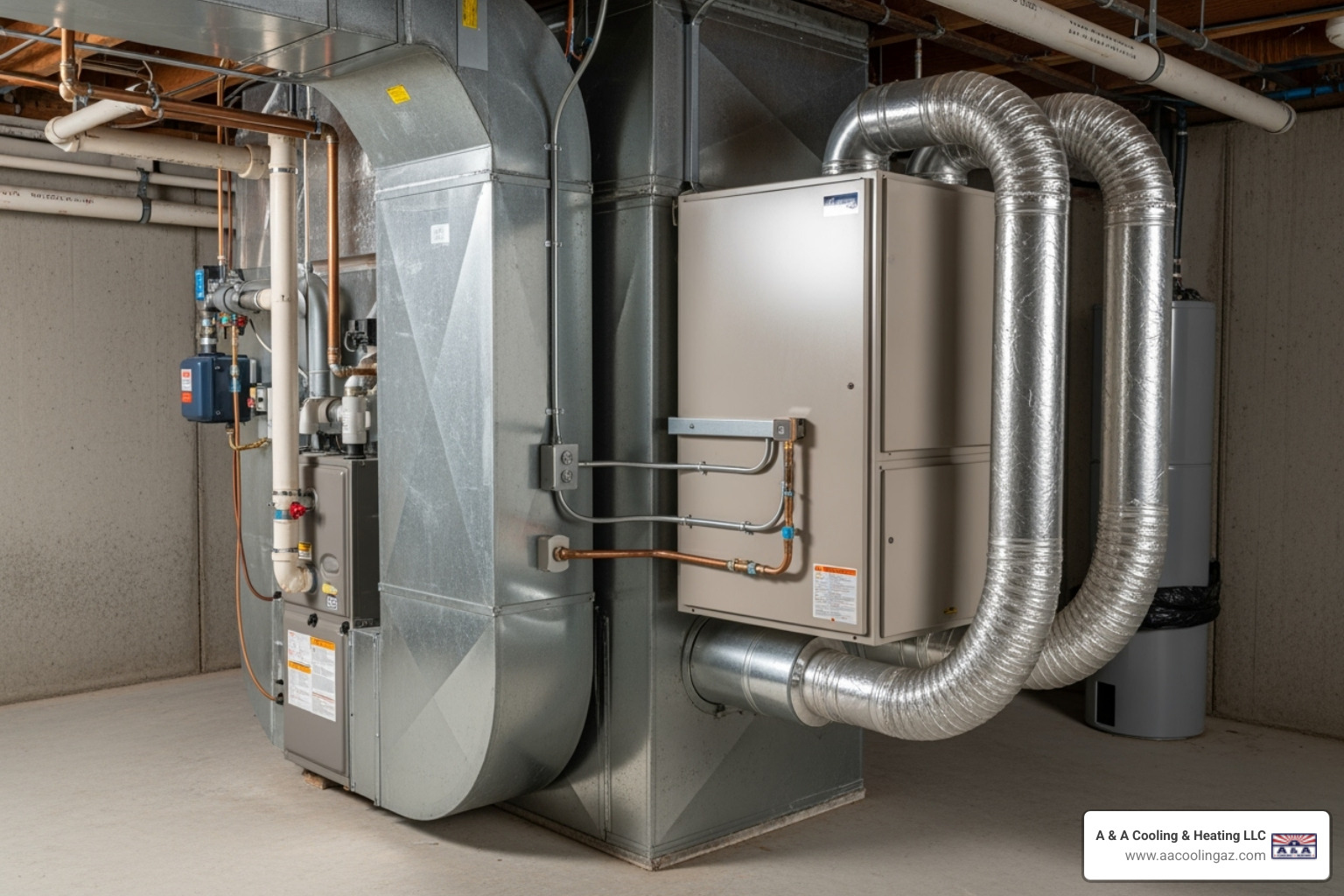
Humidifiers add moisture to combat dry desert air, which can cause irritated sinuses, dry skin, and damage to wood furnishings. Dehumidifiers remove excess moisture, especially during monsoon season, to prevent the growth of mold, mildew, and dust mites. The ideal indoor humidity level is between 30-50%. This range inhibits mold growth, protects your health and home, and keeps your respiratory system comfortable. In our climate, humidity control is an essential part of any air quality strategy. Find out more here: Improving Air Quality with Dehumidifiers.
Air Sanitization with UV Lights
UV light technology acts as a silent guardian inside your HVAC system, neutralizing harmful microorganisms. UVC technology uses a specific wavelength of ultraviolet light with proven germicidal properties, trusted for decades in hospitals. UVC light damages the DNA of viruses, bacteria, and fungi, preventing them from reproducing and causing illness. When installed in your ductwork, UVC lamps expose circulating air to this germicidal light. They also prevent mold and bacteria from growing on the damp evaporator coils of your HVAC system, which keeps your air healthier and helps your system run more efficiently.
How to Assess and Improve Your Home's Air
Taking control of your indoor air quality starts with understanding your home's atmosphere. Whether you begin with simple DIY steps or professional testing, being proactive is the key to breathing easier.
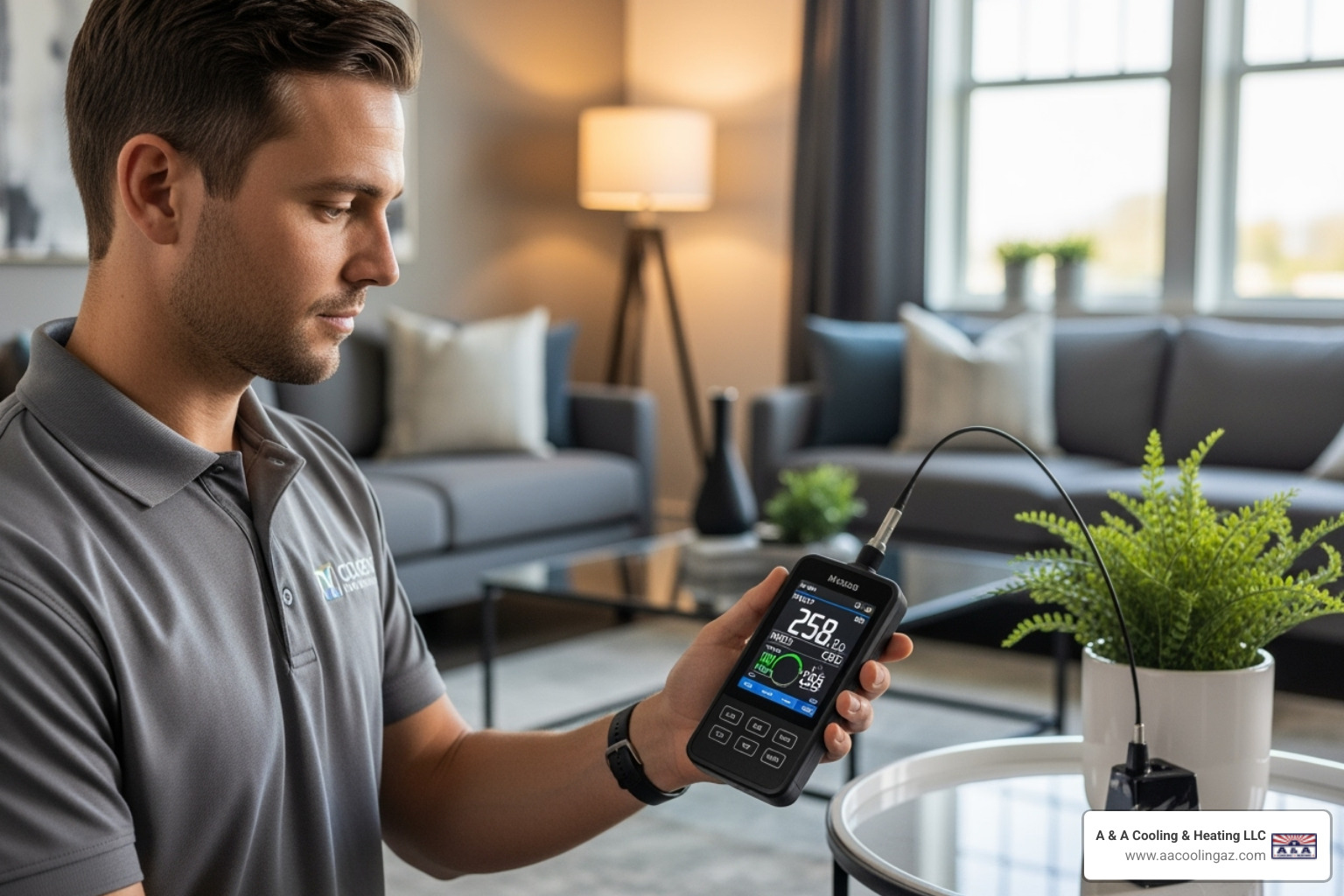
Simple Steps for a Healthier Home Environment
Some of the most effective air quality solutions are simple habits you can start today.
- Regular cleaning: Dusting, vacuuming with a HEPA filter, and mopping floors dramatically reduce dust, dander, and allergens.
- Frequent filter changes: Your HVAC filter is a key protector. Check it monthly and change it according to the manufacturer's guidelines (typically every 1-3 months for 1-inch filters, 6-12 for media filters). A clogged filter is ineffective. For help, see our guide: What Kind of Air Filter Should I Use?.
- Using exhaust fans: Always use fans when cooking and showering to capture moisture, odors, and pollutants at the source.
- Airing out the house: When outdoor air quality is good, open windows for a few minutes to dilute indoor pollutants.
- Monitoring humidity levels: Use a hygrometer to keep humidity between 30-50%, preventing mold growth and respiratory irritation.
The Benefits of Professional Air Quality Testing
While DIY steps are great, some invisible problems require an expert. Professional air quality testing is like a health checkup for your home.
Professionals use specialized equipment for accurate pollutant identification, detecting particulate matter, VOCs, and mold spores that you can't see or smell. They perform root cause analysis to find not just the problem, but its source, ensuring a permanent fix. A Certified Indoor Environmental Consultant (CIEC) provides a science-based, unbiased evaluation.
This process leads to custom recommendations custom to your home's specific needs, giving you a clear roadmap and the peace of mind that your family is breathing healthy air.
Since 1976, we've helped Arizona families with comprehensive air quality testing and solutions. Learn more about our professional services: Indoor Air Quality Testing San Tan Valley AZ.
Frequently Asked Questions about Air Quality Solutions
After nearly five decades in the business, we've heard every question about air quality solutions. Here are the most common ones.
How does outdoor air quality affect my indoor air?
Your home isn't a sealed bubble. Outdoor pollutants like smog, dust, and pollen easily enter through open windows, doors, and even tiny cracks in your home's structure. When outdoor air quality is poor, especially during Arizona's dust storms, your home's filtration and purification systems are your first line of defense, creating a clean air sanctuary indoors.
Are houseplants an effective air quality solution?
While houseplants are great for aesthetics and mental well-being, they are not an effective air purification method. The famous NASA studies were conducted in small, sealed chambers, unlike a typical home. You would need an impractical number of plants to make a noticeable difference in your air quality. Worse, overwatered plants can grow mold, which harms air quality.
How often should I change my HVAC air filter?
For basic 1-inch filters, change them every 1-3 months. For higher-efficiency media filters (4-5 inches), every 6-12 months is typical. However, the ideal frequency depends on factors like pets, allergies, and local dust levels in Arizona. If you have pets or allergies, you'll need to change filters more often. Always check the manufacturer's recommendation and visually inspect your filter monthly, especially during peak AC season.
Conclusion
Taking a deep breath of truly clean air in your home is a transformative experience. It's about creating a healthier foundation for your family's daily life. By implementing the right air quality solutions, you can turn your home into a clean-air sanctuary.
The path to better air involves a multi-faceted approach:
- Source Control: Your first line of defense.
- Proper Ventilation: To refresh your indoor environment.
- Advanced Filtration: To capture what slips through.
- Humidity Control: To maintain comfort and prevent mold.
- UV Sanitization: For an extra shield against germs.
In Arizona's unique climate, where sealed homes can trap pollutants, these solutions are critical. At A & A Cooling & Heating LLC, we've helped Apache Junction families breathe easier since 1976. We understand our desert environment and create custom solutions that fit your home and budget. Our Cool Club maintenance plan ensures your systems work optimally year-round.
Your family's health is too important to leave to chance. The right air quality improvements can make a dramatic difference in how you feel every day.
Ready to start breathing cleaner air? Learn more about our comprehensive approach: Breathe Clean, Live Healthy: Indoor Air Quality Solutions for Arizona Homes.
Take the first step toward healthier indoor air today. Contact us for expert AC repair and air quality services in San Tan Valley, AZ and find how clean air can transform your home.






